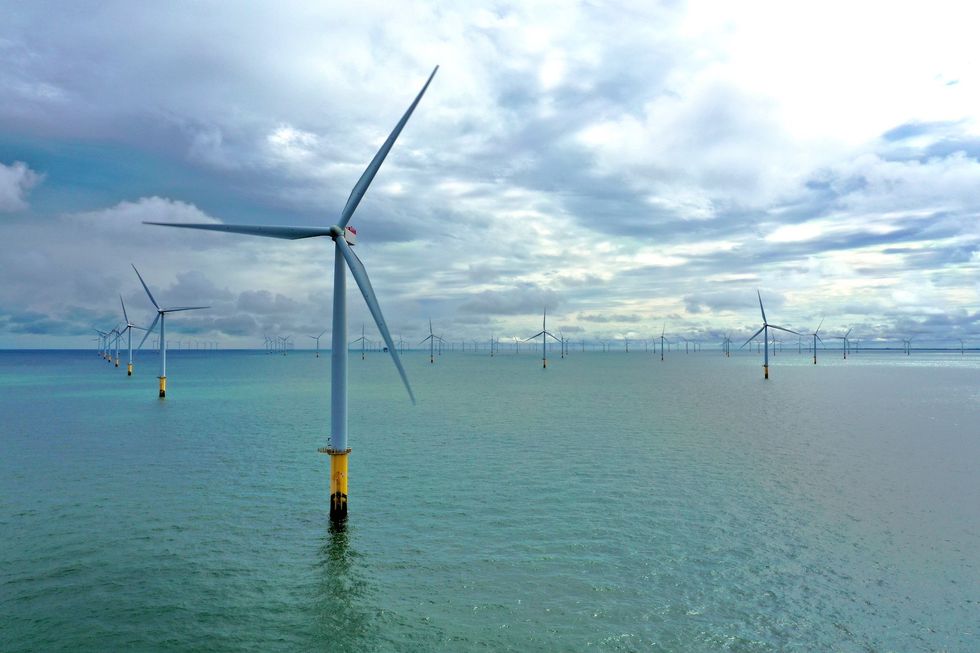Britain is paying the highest electricity prices in the developed world, according to official data, but some firms are finding innovative ways to slash their energy bills.
The cost of power for industrial businesses has soared by 124 per cent in just five years, placing the UK at the top of international league tables.
Electricity prices for UK industrial users have reached 25.85p per kilowatt hour in 2023, compared to 10.43p five years ago.
This is approximately 50 per cent more expensive than in Germany and France, and four times costlier than in the United States.
The stark figures have raised concerns about the future of UK industry, with warnings that high energy prices are crippling domestic manufacturers.
Frank Aaskov, director of energy at UK Steel, said: “High industrial electricity prices have for too long damaged the competitiveness of UK steelmaking, and many in the wider manufacturing sector will be feeling the same pressure our steel companies do.”

Businesses can take several steps to reduce their energy costs
OCTOPUS ENERGY
The Government faces a significant challenge in addressing these high energy costs while simultaneously encouraging industries to switch from gas to electricity-powered processes as part of net zero efforts.
Despite attempts to reduce power costs, including the introduction of the “supercharger” discount for energy-intensive businesses, UK Steel reports that electricity remains roughly twice as expensive as in Germany.
The disparity is attributed to the UK’s greater reliance on gas for electricity generation, with 33.7 per cent of power coming from this source in 2023.
A North Tyneside manufacturer, Norfran, has explained how they were able to tackle soaring energy costs. Through support from the Business Energy Saving Team (BEST), Norfran is set to save £300,000 on energy bills.
The company received an energy audit from BEST, leading to the installation of more efficient electric furnaces. With £16,640 in funding, Norfran installed two new furnaces, expected to cut energy costs by over £130,000 annually.
Three additional furnaces were also installed, with the aim of recovering the investment within a year and reducing carbon dioxide emissions by 361 tonnes per year.
Councillor Sandra Graham of North Tyneside Council praised the initiative, stating: “It’s great to see companies like Norfran taking action to seek alternative operating processes, cutting costs and hugely reducing their environmental impact.”
Businesses can take several steps to reduce their energy costs. Smart energy management systems can identify inefficiencies in energy consumption, allowing companies to reconfigure heating, lighting, and equipment usage.
Investing in energy-efficient equipment, such as less power-intensive lighting systems or upgraded machinery, can drive significant savings.
Renewable energy options, including solar panels and wind turbines, offer opportunities to cut bills and reduce carbon footprints.
Employee engagement and training can also yield results. Simple behaviours like shutting down workstations can make a difference in aggregate.
Conducting regular energy audits is crucial for businesses to understand their consumption patterns and identify improvement opportunities. Professional advisers can assist in this process, helping companies move in the right direction towards lower energy costs.
The Government maintains its commitment to addressing high energy costs for UK industries. A spokesperson stated: “We are already bringing energy costs for UK industries closer in line with other major economies through the British Industry Supercharger.”
This scheme exempts eligible firms from certain costs linked to renewable energy policies, particularly benefiting those exposed to high electricity costs.
LATEST DEVELOPMENTS:
The Government’s mission for clean power by 2030 aims to protect billpayers and boost Britain’s energy independence.
The spokesperson added: “Clean, homegrown energy is the best way to protect billpayers and boost Britain’s energy independence, with improving infrastructure at the heart of this mission.”
However, challenges remain in balancing industrial competitiveness with the transition to cleaner energy sources.